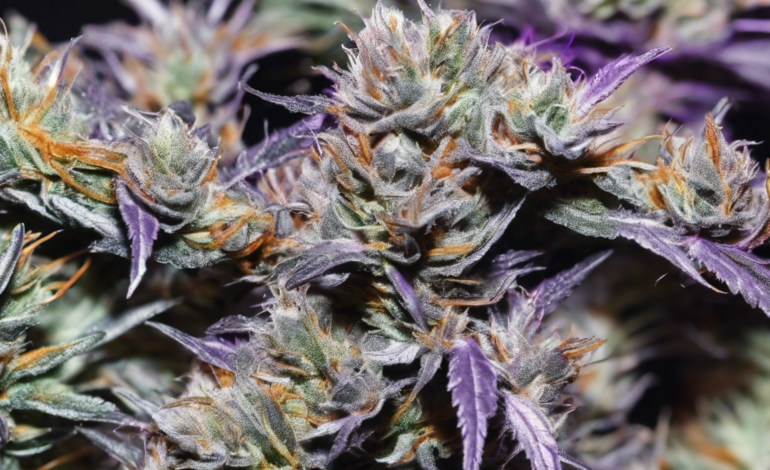
Exploring the World of Apothecary Farms: A Comprehensive Guide.
In recent years, there has been a resurgence in interest in apothecary farms and the healing properties of plants. Apothecary farms, also known as herbal farms or herb gardens, are places where medicinal plants are grown, harvested, and prepared for various uses, including herbal remedies, teas, tinctures, and skincare products.
Apothecary farms have a long history dating back centuries, where healers and herbalists would cultivate plants for medicinal purposes. Today, apothecary farms continue this tradition by growing a wide variety of medicinal herbs and plants, often using organic and sustainable farming practices.
The Benefits of Apothecary Farms
Apothecary farms offer a range of benefits for both individuals and the environment:
-
Sustainable Agriculture: Many apothecary farms practice sustainable farming methods such as organic cultivation, crop rotation, and composting, which help preserve the health of the soil and reduce environmental impact.
-
Access to Fresh Herbs: By growing their own medicinal plants, apothecary farms provide access to fresh, high-quality herbs that can be used for various health and wellness purposes.
-
Education and Awareness: Apothecary farms often offer educational programs, workshops, and tours to help people learn about the healing properties of medicinal plants and how to incorporate them into their daily lives.
-
Community Engagement: Apothecary farms can serve as community hubs, bringing people together to learn, share knowledge, and connect with nature.
Common Medicinal Plants Grown in Apothecary Farms
Apothecary farms typically grow a wide variety of medicinal plants, each with its own unique properties and uses. Some of the most common medicinal plants found in apothecary farms include:
1. Lavender (Lavandula angustifolia)
- Benefits: Known for its calming and relaxing properties, lavender can help reduce stress, anxiety, and promote better sleep.
- Uses: Lavender is often used in aromatherapy, skincare products, teas, and tinctures.
2. Echinacea (Echinacea purpurea)
- Benefits: Echinacea is believed to boost the immune system and help the body fight off infections, colds, and flu.
- Uses: Echinacea is commonly used in herbal remedies, supplements, and teas to support immune health.
3. Calendula (Calendula officinalis)
- Benefits: Calendula has anti-inflammatory and antiseptic properties, making it ideal for soothing skin irritations, wounds, and rashes.
- Uses: Calendula is often used in skincare products, balms, and salves for its healing properties.
4. Lemon Balm (Melissa officinalis)
- Benefits: Lemon balm is known for its calming and mood-enhancing effects, making it useful for reducing anxiety and improving sleep.
- Uses: Lemon balm is commonly used in teas, tinctures, and aromatherapy products.
How to Start Your Own Apothecary Farm
If you’re interested in starting your own apothecary farm, here are some steps to get you started:
-
Research and Planning: Begin by researching different medicinal plants, their growing requirements, and potential uses. Create a farm plan outlining the plants you want to grow, the layout of your farm, and any necessary equipment.
-
Locating a Site: Find a suitable location for your apothecary farm with access to sunlight, water source, and good soil quality. Consider factors such as zoning regulations, land availability, and proximity to markets or communities.
-
Preparing the Soil: Ensure the soil is well-prepared by testing its pH levels, adding organic matter, and addressing any nutrient deficiencies. Consider using raised beds or containers for easier maintenance.
-
Planting and Caring for Medicinal Plants: Start planting your chosen medicinal plants according to their specific requirements for sunlight, water, and spacing. Regularly monitor and care for your plants by watering, weeding, and protecting them from pests and diseases.
-
Harvesting and Processing: When your plants are ready for harvest, carefully collect and dry them to preserve their medicinal properties. Explore different methods of processing, such as making teas, tinctures, or extracts.
-
Community Engagement: Consider hosting workshops, events, or farm tours to engage with the community and share knowledge about herbal medicine and sustainable farming practices.
Frequently Asked Questions (FAQs)
Q1: What are some important factors to consider when starting an apothecary farm?
A1: When starting an apothecary farm, it’s essential to consider factors such as location, soil quality, plant selection, and access to resources like sunlight and water.
Q2: Can I grow medicinal plants in my backyard or on a small scale?
A2: Yes, many medicinal plants can be grown in small spaces like backyard gardens, containers, or raised beds. Research the growing requirements of each plant to ensure they thrive.
Q3: Are there any legal regulations or restrictions on growing medicinal plants for personal use?
A3: It’s important to research local regulations and restrictions on growing and selling medicinal plants, as some herbs may be subject to specific laws or require permits.
Q4: How can I learn more about the properties and uses of medicinal plants?
A4: You can expand your knowledge by attending herbalism courses, workshops, reading books on herbal medicine, and connecting with experienced herbalists or growers.
Q5: What are some common ways to use medicinal plants from an apothecary farm?
A5: Medicinal plants can be used in various forms such as teas, tinctures, salves, essential oils, balms, poultices, and infused oils for their therapeutic benefits.
In conclusion, apothecary farms offer a unique opportunity to connect with nature, learn about the healing properties of plants, and promote health and well-being through herbal medicine. Whether you’re interested in starting your own apothecary farm or simply exploring the world of medicinal plants, there is a wealth of knowledge and resources available to guide you on your journey towards holistic healing and sustainable living.

